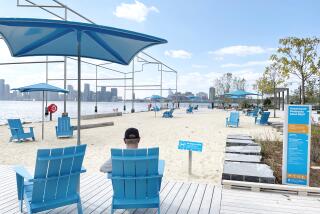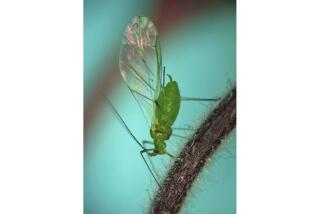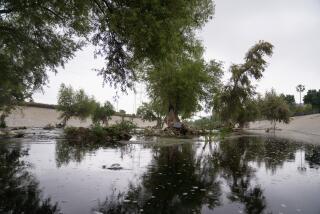Terror of the Hudson River Is Back
NEW YORK — After a massive cleanup over the last few decades, the Hudson River has begun to show signs of life.
Unfortunately, this revival has included not only fish and fowl and tadpoles. It also has brought a return of the mighty teredo.
“The terrible teredo, I call it,” said Marc A. Matsil, chief of natural resources for New York’s parks and recreation areas. The teredo, he explained, eats wood. It particularly enjoys piers, docks, boat hulls and wooden pilings.
A worm-like mollusk, the teredo digs into its wooden target and hollows out the insides as it grows into a thin, foot-long shellfish. After a prolonged feast, the teredo’s home can suddenly disintegrate into a pile of splinters.
“It’s real difficult to spot them,” Matsil explained. “As a pier collapses on you, then the teredo becomes one of the prime suspects.”
Around New York, where the gray-brown Hudson flows on its way from upstate to the Atlantic Ocean, the teredo and its above-water colleague, the limnoria, suddenly have rendered many wooden pilings into instant free-standing driftwood. These rotten poles provide a troubling clue about what’s happening underneath the man-made grounds on the city’s shorelines.
One teredo victim is a little gem of a park near Wall Street that has been closed almost a year while engineers repair its wooden underpinnings. Called the “‘penny park” because its picnic area features a series of bronze Tom Otterness folk playing on mock pennies, the eight-acre park opened in 1992.
A rare uncrowded riverside park, its popularity was growing when it was walled off with chain-link fence last summer. Signs explaining the river’s cleanup and the return of the teredo, or shipworms, defused some of the usual New Yorkers’ grumbling. As one park-goer noted gruffly: “A city park works better if its not underwater.”
“These submerged pilings, if they’re not hard wood, are breakfast, lunch and dinner for these marine borers,” said Henry J. Stern, New York City’s parks commissioner. The city has spent more than $100 million by some estimates to repair teredo damage.
The search for a way to combat the teredos is an ancient mariner’s problem. Christopher Columbus was grounded in Jamaica on his fourth voyage to the new world because the shipworms had been devouring two of his vessels.
In the 19th century, New York’s harbor was too polluted for the teredos to survive, but the creature began to make a comeback in the last few years. One study of two city piers in 1990 showed almost no teredos in wooden pilings. By 1997, core samples found the creatures in 95% of the wood examined.
In the past, marine engineers have used creosote, tar and even arsenic to protect the wood--substances that environmentalists say can re-pollute the river. So New York is experimenting with recycled plastic, concrete and steel.
Recycled plastics have not been strong enough to hold up a pier or park, Stern said. One effort to use steel beams covered with recycled plastic had to go back to the drawing board after lightning hit a steel pole and melted the plastic.
So at the penny park, some pilings were filled with concrete and then wrapped in a kind of waterproof plastic. Others that had weathered the borer simply were wrapped in an unappetizing industrial polyurethane.
“This plastic sticks in their throats,” Stern said of the army of mollusks.
More to Read
Sign up for The Wild
We’ll help you find the best places to hike, bike and run, as well as the perfect silent spots for meditation and yoga.
You may occasionally receive promotional content from the Los Angeles Times.






